As the pressure to create social media-worthy affairs intensifies, tent and event rental companies offering domes and inflatable structures stand to reap memorable benefits.
by Pamela Mills-Senn
Whether celebrating wine, beer, garlic, apples, jazz or some other beloved product, pursuit or pastime, there seems to be no end to festivals. These gatherings bring communities together, and they represent profitable opportunities for tent and event rental companies, especially those offering structures of unexpected shapes and sizes such as domes and inflatables.
But the market for these structures isn’t limited to these kinds of events. Miriam Couturie, marketing manager for Ins’TenT Industries, says the company’s air-sealed inflatable tents appear not only at festivals but at parties and corporate promotional events. In addition to inflatable structures, the Huntington Beach, Calif.-based company manufactures tents and furniture for the rental industry, including inflatable furniture and arches.
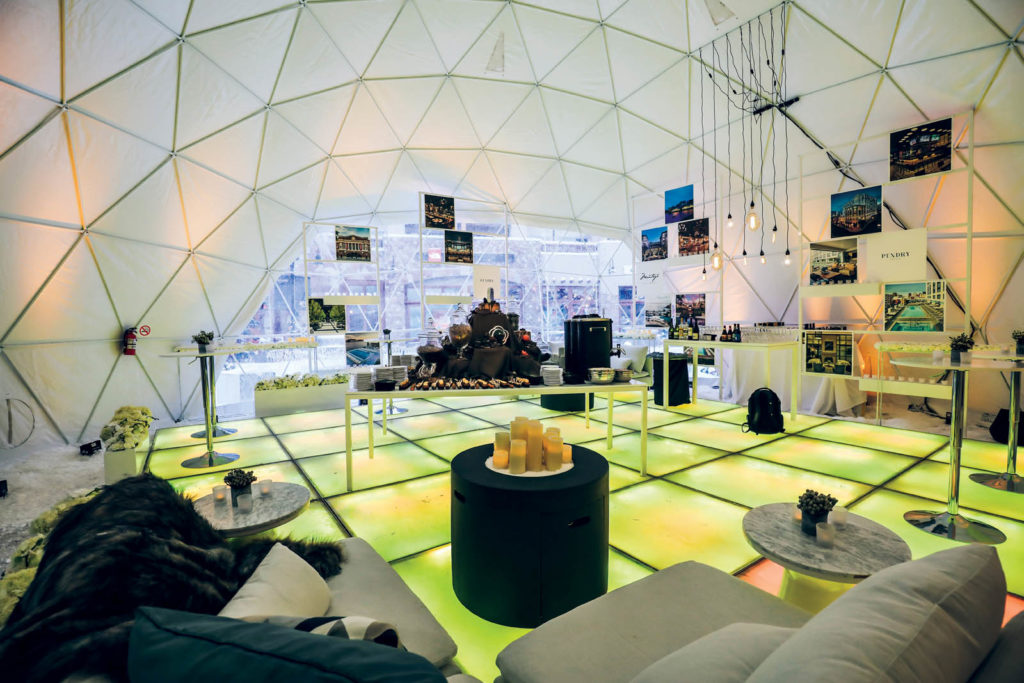
“People like how they generate excitement,” she says about Ins’TenT inflatables. “Many brands are using them for special events to gather a crowd. They’re not only great for the rental industry but for the promotional industry as well because the tops can be printed for branding events.”
Event spaces today are being designed to stand out on social media, and brand marketers and event producers are looking for striking backdrops, large objects, unexpected visuals and great lighting. Domes and inflatable structures help set the stage for those perfect Instagrammable experiences, and they offer numerous benefits to tent and event rental companies as well.
“Rental companies are always looking for the next best thing in the market that can set them apart from their competition and offer more variety than your typical frame or pop-up tents,” Couturie says.
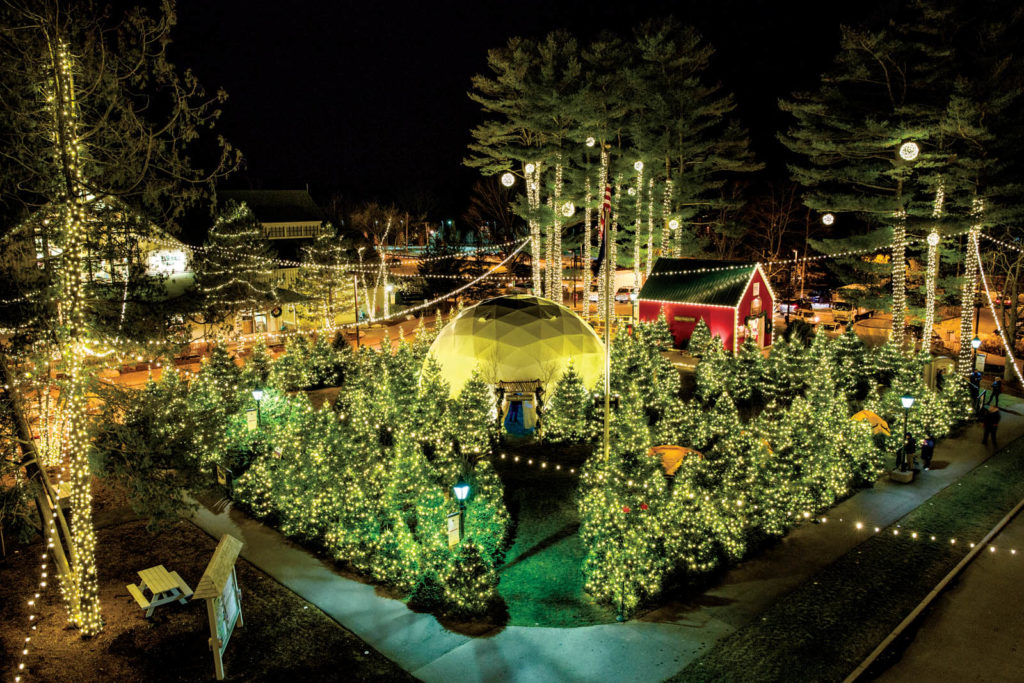
Attention grabbers
The desire to stand out is a primary goal for customers of dome manufacturer Archimedes Design, based in Brooklyn, N.Y. While the domes were originally developed for music and art festivals, the company now promotes them to a variety of event market segments including sporting events, corporate hospitality and weddings, says managing partner Toby Vann.
The company’s QuickDome structures are variations on the same shape, which Vann describes as a “truncated icosahedron” (imagine a soccer ball). Archimedes offers two-door, three-door or five-door models in two sizes. The structures allow for contiguous and noncontiguous printing of images on exterior or interior sides of the panels.
“The two-door is ideal for fairs and festivals needing line-of-sight and foot traffic pass-through,” he explains. “The three-door is ideal for sports and endurance events, including the most options for individually branded panels, and the five-door is a beautiful rotunda with 360-degree access.”
Multiday music festivals and the experiential marketing industry are propelling demand for Hexadome tents, says Stephen McKay, president of Euphoria Event Solutions LLC, a specialty tent rental company focusing on unique luxury tents and fabric structures. Based in Windsor, Conn., Euphoria works with festival and concert producers and designers nationwide. According to McKay, Euphoria is the biggest supplier in the U.S. of the 100-square-meter and 175-square-meter Hexadome tents, which are manufactured in the Netherlands.
Euphoria clients want to make a statement about the quality of their product or event, McKay says. The Hexadomes have been used for activities ranging from VIP receptions and gala fund-raiser check-ins to festival “chill” spaces and cereal bars.
First showcased in the U.S. in 2018, the Hexadome tent is experiencing skyrocketing demand, with a per annum growth of more than 50 percent, McKay says. He attributes this to his company’s deliberate efforts to promote the structures and educate rental consumers, as well as to the visually exciting tents themselves.
DomeGuys International LLC is another company that reports a substantial increase in demand for its products, according to DomeGuys president Russell Phillips. Located in Medford, Ore., the company rents and sells geodesic-style structures along with a variety of accessories, such as branded covers, fire-rated double-door sets, HVAC ports, roll-up side vents and clear vinyl windows. A negative pressure dome features an interior projection screen to create a fully immersive experience. The company also provides full build-and-strike services, site engineering reports, flooring, anchoring and HVAC services.
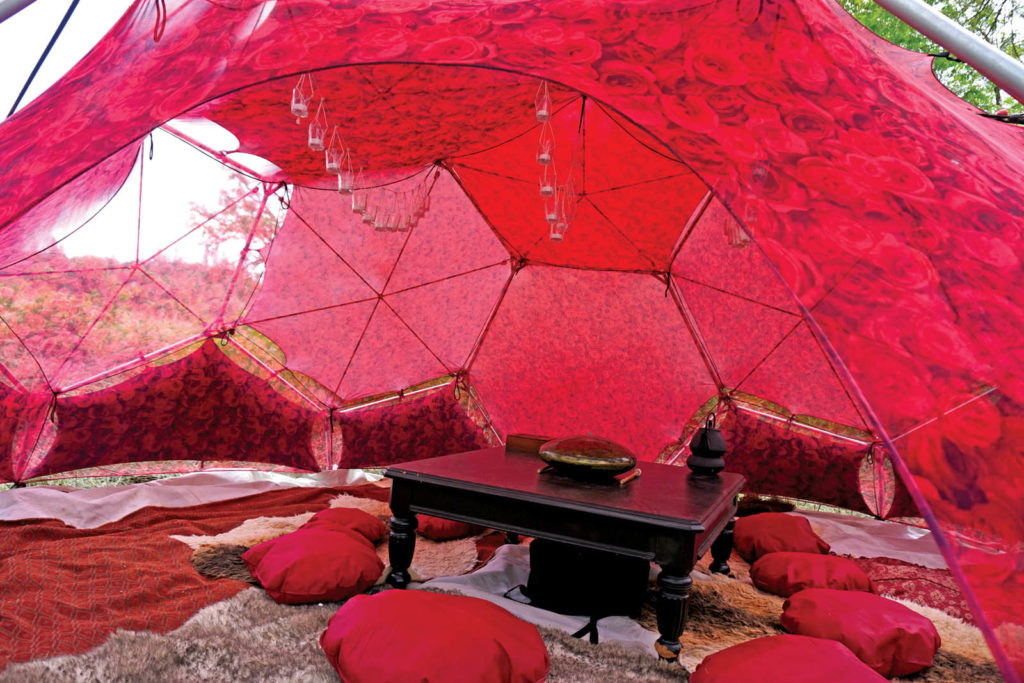
“I think one of the factors driving demand for our geodesic domes is that these provide an ideal choice for marketing events and brand recognition because of their shape and their ability to create a distinct memory for the attendees,” Phillips says, adding that he’s seeing strong growth in Canada, with builds in Toronto, Vancouver, Ottawa and Whistler.
The indoor expo market is another growing segment, according to Sean McCarthy, owner of McCarthy Tents & Events, Rochester, N.Y., and U.S. distributor for U.K.-based Evolution Domes.
The Evolution Dome brand was established in the United Kingdom about 11 years ago and has since realized 60 percent growth there annually, McCarthy says. He attributes this to factors such as visual appeal and ease of branding. The company’s 12-meter Cube offers a height of 7 meters and just over 1,200 square feet of internal usable floor space. This structure has been deployed for brand awareness campaigns, pop-up road shows, music events and breakout spaces. The larger “Fluid Scarab” structure provides more than 8,000 square feet of usable floor space and is ideal for large conferences, gala dinners or festivals.
Benefits and caveats
Installation and teardown are fast, McCarthy says of Evolution Dome structures—three people can install the Cube in under an hour. Because there are just three components—the canvas dome, the inflation fans and the ballasting equipment—training is simple.
“But the structure unroll takes only minutes, and four staff members could move onto the next site while two inflate and handle securing the structure,” McCarthy explains. “The same is true on takedown. You only need six people for rolling and palletizing; the rest can be handled by two.”
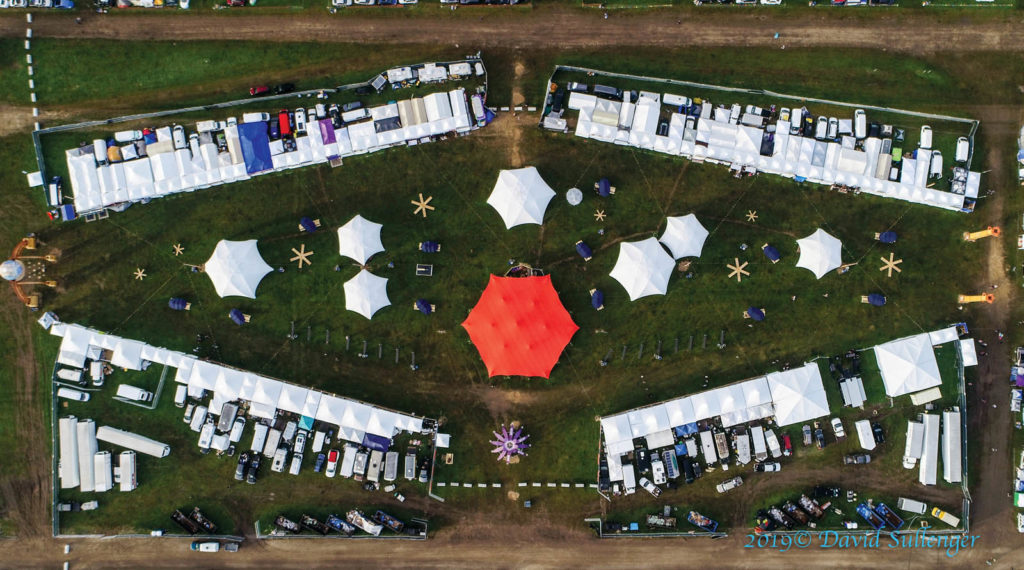
QuickDomes can install in under an hour with a small crew, Vann says. Only one crew person needs prior training, he adds, explaining that three parts—a proprietary aluminum or steel hub, aluminum tubes all cut to identical length, and proprietary nylon ratchet tensioners—make up the entire system.
Shape is a consideration for design and layout inside the domes, as round structures don’t make full use of orthogonal spaces like a square tent will. Because QuickDomes are offered in just 27-foot and 18-foot sizes, individual domes cannot accommodate larger crowds, but they can be linked together, “which . . . offers multiroom complexes with elegant organic symmetry,” Vann says.

Euphoria’s Hexadome tents may be used as single structures covering more than 1,300 square feet, or they can be connected using custom joiner panels, McKay says. Their semi-translucent tent skin offers protection from the elements, while still allowing diffused light into the space. Multiple rigging points make hanging lights and other decor and equipment easy. A typical Hexadome will go up in three hours, requiring almost no hand tools to install.
“There are plenty of reasons to add Hexadome tents to your inventory,” says McKay. “But be prepared to spend quite a bit more than you would on a typical pole tent, as shipping from foreign locations isn’t inexpensive. One of the biggest issues with these rare birds is obtaining parts from overseas. It’s important to have a reliable source for backup parts as well as engineering support.”
Companies considering adding domes should check local requirements for engineering, permits and fire certificates, DomeGuys’ Phillips advises, mentioning that in some cases, a site-specific engineering report may be required—a service the company provides (the company typically doesn’t handle permitting, but the process is often similar to that of traditional tents, depending on the jurisdiction).
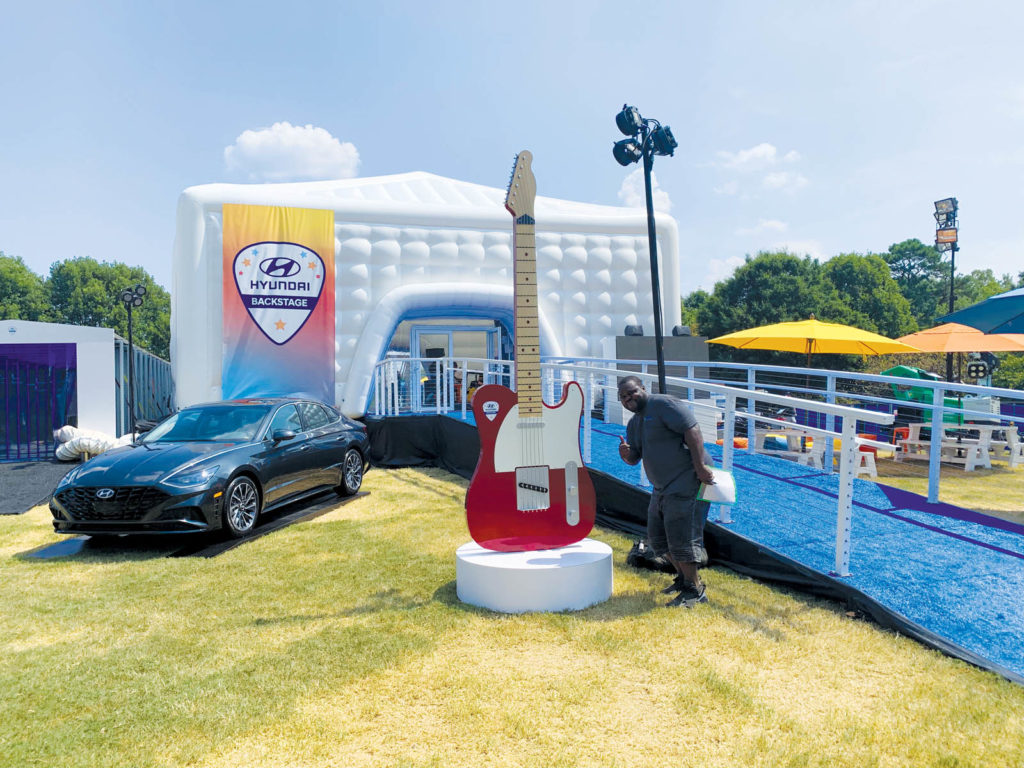
Small domes from DomeGuys can be built with simple instructions from the company. But for the first installation of a larger dome, Phillips recommends having at least one DomeGuys employee on site to train. A dome that is 36 feet in diameter and 20 feet tall, with 995 square feet (a popular size) of interior space can be installed in about 8 to 10 hours, depending on site access, build surface, weather and anchoring type.
Minimal training is needed to set up Ins’TenT’s Air Dome and Mega Air Dome inflatables, says Couturie. Nor are large crews required. The domes inflate through one valve, and the air-sealed technology makes continuous airflow/blowers unnecessary. Deflated, they fit into a storage bag and can be stacked on top of one another.
Couturie expects a boom to happen for inflatables within the next year, not just because of technology advancements, but because of their presentation and ability to draw a crowd. The same could be true for other standout temporary structures. As manufacturers continue to innovate, and as those tasked with creating unforgettable events face intensifying pressure, tent rental companies can profit from introducing the right extraordinary structures in their markets.
Pamela Mills-Senn is a Long Beach, Calif.-based freelance writer.
SIDEBAR: Calculating Risk
Like any business, tent and event rental companies must innovate or risk losing customers to competitors with more exciting offerings. At the same time, adding less common structures such as domes and inflatables must be undertaken with calculation. If not, tent rental companies risk having expensive inventory remain in the warehouse rather than earning back the investment costs.
One consideration is the resources the structure will require, such as new installation equipment, an expanded transport fleet, more ballasting, larger crews and additional training. Storage space, maintenance, and permitting must also be taken into account.
A review of the current customer base is necessary—not just for untapped opportunities, but also for what the market is willing to pay, as some of these structures carry higher rental fees. Look at what competitors are offering. Inquire about manufacturer support and training. Ask manufacturers for customer referrals.
Event structure manufacturers want rental companies to succeed. Providing them with your business details should result in an honest assessment as to whether a structure—dome, inflatable or otherwise—would be a good fit.
 TEXTILES.ORG
TEXTILES.ORG


